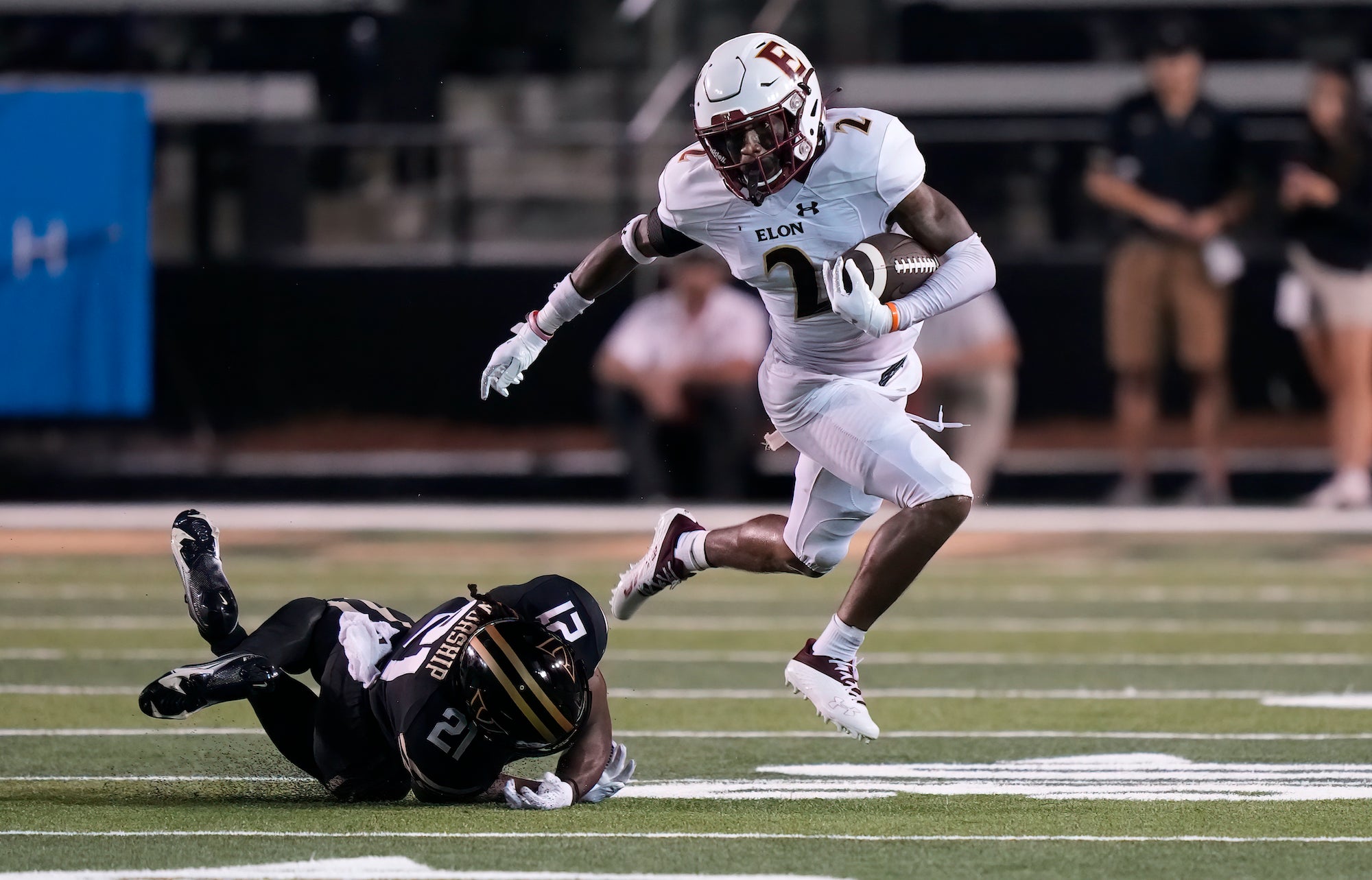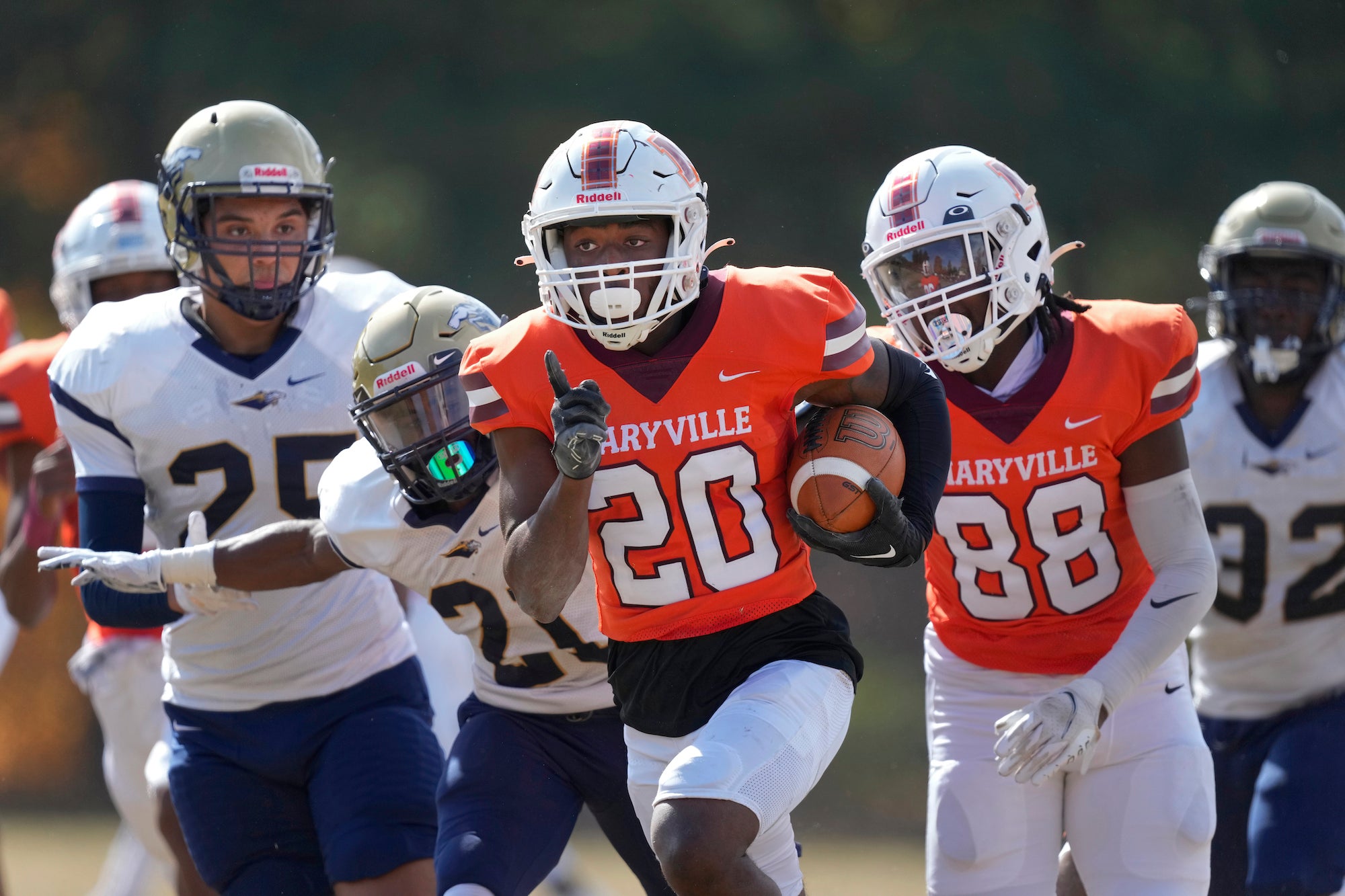Veteran sports photojournalist Patrick Murphy-Racey has years of experience capturing sports action from the sidelines. In his sports photography kit, you’ll find a pair of Sony Alpha 1 cameras, which he calls, “The greatest sports camera ever made, period.” With all of the games and matches he’s photographed, he’s learned the best way to set up autofocus on his cameras to ensure he doesn’t miss a moment. Keep reading as the Sony Artisan shares his autofocus setup tips for sports photography.
“I am totally enamored with tracking. It's just absolutely the most awesome way to cover anything, and it leaves not a crumb on the ground.” – Sports photographer Patrick Murphy-Racey
Photo by Patrick Murphy-Racey. Sony Alpha 1. Sony 400mm f/2.8 G Master. 1/2500-sec., f/4, ISO 800
1. Set Your Focus Mode To AF-C
The first thing he says is to make sure your camera’s Focus Mode is in AF-C Mode. “On most cameras right out of the box, they will be set to AF-A mode.” says Murphy-Racey. “That’s the first thing a lot of people miss. They go out and have trouble and can’t figure out why it won’t work. So the number one thing is to make sure you are on AF-C, Autofocus Continuous.”
2. Select Tracking As Your Focus Area
With your camera set to AF-C mode, you are able to set your Focus Area to Tracking. This will allow your camera to track your subject within your selected autofocus area. “It can never be understated the impact of this on our lives as sports photographers,” he explains. “Not only sports, all performance, dance, birds in flight. The tracking autofocus was first debuted on the Alpha 9 in a firmware update. It was amazing. It's like a miracle happened for those of us that shoot sports. So tracking autofocus is now the foundation of all of my autofocus, no matter what I'm shooting, but especially sports. It is unequivocal. But if I didn't have the ability to use tracking autofocus, I would be so far away from the quality that I'm capable of now.”
3. Set Your Focus Area To Flexible Spot: M (With Exceptions)
With Tracking on, you can then select your focus area based on the subject size on your screen. Murphy-Racey has his set to Flexible Spot: M, for Medium. “If I'm doing sports photography, that is my go-to setting,” he says. “I almost never touch it or change it. The exception would be if I’m using the 2X Teleconverter or 1.4X Teleconverter on one of my lenses to go over 800mm, then I’m going to go Small and use Flexible Spot: S instead of M. The reason for this is if I’m far away, for example I’m photographing a football game and they’re in one end zone and I’m in the other. I can’t wait for them to come to me, I have to capture what’s happening at that end. If I’m trying to select a player that’s facing me, it’s best to use Small because it’s so far away that the indicator would pick up more than one helmet."
Photo by Patrick Murphy-Racey. Sony Alpha 1. Sony 400mm f/2.8 G Master. 1/2000-sec., f/2.8, ISO 4000
4. Set Back-Button AutoFocus
Setting back-button focus on your Sony Alpha camera moves the focus from the shutter button to a different button you can choose on the back of the camera. (Learn more about the specifics of back-button autofocus HERE.) Murphy-Racey says whether or not to use back-button focus has been an age-old question among sports photographers. “I'm in the camp of action photographers that would say that back-button focus is essential,” he explains. “If you're an equestrian photographer that only photographs horses one at a time running through a course, you can use your index finger on the shutter button to activate autofocus. Or if you’re photographing racing around a track, it’s a constant motion in one direction so you can anticipate. The problem comes when the motion of the sport you’re shooting is not fluid.”
He continues, “If you’re photographing a basketball game, all bets are off because the motions aren’t fluid, they’re jerky. The point guard can drive up the court and back to half court, then left, right, back and forth. In a split second the ball is across the court in another player’s hands. You just don’t know what’s going to happen. Then introduce the referees who are always running down the court opposite of each other. If you’re using your index finger for the shutter release and to activate autofocus, you have to lift up when he comes in front of you and then it will focus on him. Everything is out of focus in the background where the action was. By the time you reacquire, find the ball and find the player, you’ve missed a basket and they’re already running to the other side of the court.”
Photo by Patrick Murphy-Racey. Sony Alpha 1. Sony 24-105mm f/4 G. 1/400-sec., f/4, ISO 320
Shooting this way can cause you to miss a large percentage of the action on the course because it’s just not possible. That’s why back-button autofocus can be so valuable in sports photography, but Murphy-Racey wants photographers to know that it’s not just something you can get overnight. “You have to get to where you are using it proficiently,” he says. “You can’t switch overnight and expect great results. You have to practice and get that muscle memory to take over because if you think about it, it’s too late and you’ve missed the moment. You really want to have your brain be on autopilot with your fingers and it’s the best way to shoot the game. You get things that you never would’ve gotten before. It's like a miracle. It really is.”
Not Leaving Any Crumbs
Use Murphy-Racey’s tips above to get sharp shots of sports action, a feat he says is becoming easier and easier for Sony shooters. “I am totally enamored with tracking. It's just absolutely the most awesome way to cover anything, and it leaves not a crumb on the ground. When I step on a football field with a Sony Alpha 1 and the Sony 400mm f/2.8 G Master or Sony 600mm f/4 G Master, and I have engaging tracking autofocus and back button, I pity the people that I'm competing against that don't have what I have. Because I am going to mop the floor with my pictures. My pictures are just, there's going to be nothing left. Not a crumb.”
Photo by Patrick Murphy-Racey. Sony Alpha 1. Sony 600mm f/4 G Master. 1/3200-sec., f/4, ISO 800
See more of Patrick Murphy Racey’s work on his Alpha Universe Profile.


















